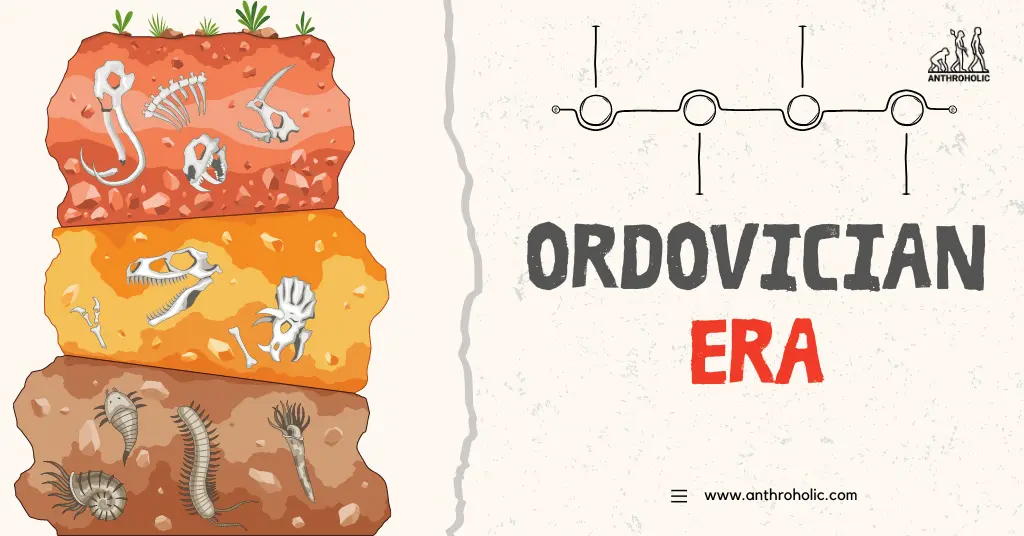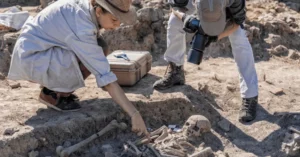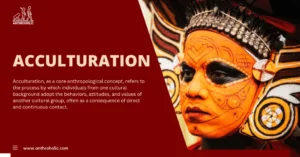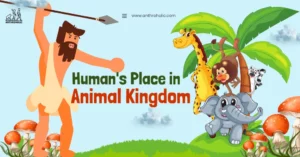AI Answer Evaluation Platform Live Now. Try Free Answer Evaluation Now
Ordovician Era
The Ordovician era, spanning from about 485.4 million to 443.8 million years ago, was an essential part of Earth’s history. Distinguished by significant evolutionary diversification and climatic events, this period marks the second of six ages in the Paleozoic era [1].

Geological Background
The Ordovician system was first defined by Charles Lapworth, a British geologist, in 1879, to resolve a conflict between advocates of the Silurian and Cambrian systems [2]. The system gets its name from an ancient Celtic tribe, the Ordovices.
Landscape and Continental Drift
In the Early Ordovician, the Earth’s landmass was mostly collected in the supercontinent Gondwana. Throughout the Ordovician, the plates underwent significant movements, resulting in the formation of several small continents by the period’s end [3].
Sea Levels
Throughout the Ordovician, global sea levels were high. This phase saw the most substantial series of sea-level increases in Earth’s history, which contributed to extensive shallow inland seas [4].
Climate and Environment
The Ordovician era started with a relatively warm climate that gradually cooled, leading to a glaciation event by the end of the period.
Early to Mid-Ordovician: Warm Conditions
The early and mid-Ordovician saw warm temperatures, and the high sea levels led to many shallow, warm, continental seas that were ideal for marine life [5].
Late Ordovician: Cooling and Glaciation
Towards the late Ordovician, Earth’s climate began to cool significantly. This cooling led to a glaciation event at the South Pole, contributing to the first of five major extinction events in Earth’s history, known as the Late Ordovician mass extinction [6].
Biodiversity and Life Forms
The Ordovician era was a time of significant biological diversification, commonly referred to as the Ordovician Radiation.
Marine Life
- The period witnessed the growth and diversification of organisms such as:
- Bryozoans
- Brachiopods
- Trilobites
- The first true fish [7]
- The era also saw the first evidence of land plants.
| Common Ordovician Marine Life | Characteristics |
|---|---|
| Bryozoans | Marine animals that formed colonies of connected individuals |
| Brachiopods | Marine animals with upper and lower hard shells |
| Trilobites | Early arthropods with a three-lobed exoskeleton |
| First True Fish | Earliest known vertebrates, jawless |
The Great Ordovician Biodiversification Event (GOBE)
The GOBE was a significant diversification event in Earth’s history, where marine faunal genera increased fourfold [8].
Mass Extinction
The Late Ordovician mass extinction event resulted from global cooling and a significant drop in sea levels [9]. It caused the extinction of 49-60% of marine genera, mainly impacting brachiopods and bryozoans.
The Legacy of the Ordovician Era
Despite the mass extinction, the Ordovician era’s legacy endures in the rich fossil record it left behind and its role in Earth’s evolutionary history. Fossils from this era have contributed significantly to our understanding of ancient life forms and environmental conditions.
Aftermath of the Mass Extinction
Early Silurian Recovery
The aftermath of the mass extinction saw the slow recovery of surviving species, setting the stage for the Silurian period [10]. The Silurian marked the appearance of new coral species and the first bony fishes, the rise of jawed fish, and significant developments in land plants.
Enduring Impact on Earth’s Biodiversity
The Ordovician mass extinction event led to a considerable decrease in diversity and significantly altered the composition of marine communities. This shift set the stage for new life forms and ecosystems to emerge and evolve [11].
Ordovician Meteor Event
The Ordovician meteor event, which occurred approximately 467.5 million years ago, is another significant event during this era. During this event, a large asteroid, possibly up to 3 km in diameter, broke up in the solar system and impacted Earth. This event is understood due to the abundance of meteorites found in Ordovician sediment, significantly more than in later periods [12].
Significant Geological Sites
Numerous sites around the world present rich Ordovician fossil records. Here are a few examples:
- The Oslo Region in Norway, which provides a detailed record of the Ordovician’s marine ecosystem [13].
- The Maquoketa Shale in the US, known for its diverse assemblage of marine fossils from the late Ordovician [14].
- The Table Head Formation in Canada, famous for preserving various marine life forms, including trilobites, cephalopods, and brachiopods [15].
Conclusion
The Ordovician era, while relatively brief in geological terms, was a dynamic period in Earth’s history. It marked an epoch of great biodiversity, climatic shifts, and continental rearrangements. Its understanding aids us in comprehending the long, complex journey that has shaped the world as we know it today.
References
[1] Ogg, J. G., Ogg, G., & Gradstein, F. M. (2016). “A concise geologic time scale: 2016.” Elsevier.
[2] Zalasiewicz, J., Williams, M., Smith, A., Barry, T. L., Coe, A. L., Bown, P. R., … & Stone, P. (2008). “Are we now living in the Anthropocene?”. GSA today, 18(2), 4-8.
[3] Torsvik, T. H., & Cocks, L. R. (2013). “New global palaeogeographical reconstructions for the Early Palaeozoic and their generation.” Geological Society, London, Memoirs, 38(1), 5-24.
[4] Haq, B. U., & Schutter, S. R. (2008). “A chronology of Paleozoic sea-level changes.” Science, 322(5898), 64-68.
[5] Trotter, J. A., Williams, I. S., Barnes, C. R., Lécuyer, C., & Nicoll, R. S. (2008). “Did cooling oceans trigger Ordovician biodiversification? Evidence from conodont thermometry.” Science, 321(5888), 550-554.
[6] Brenchley, P. J., Carden, G. A., & Marshall, J. D. (2003). “Environmental changes associated with the “first strike” of the Late Ordovician mass extinction.” Modern Geology, 28, 69-88.
[7] Sansom, I. J., Smith, M. M., & Smith, P. (1999). “Scales of thelodont and shark-like fishes from the Ordovician.” Nature, 402(6759), 265-268.
[8] Servais, T., Owen, A. W., Harper, D. A., Kröger, B., & Munnecke, A. (2010). “The Great Ordovician Biodiversification Event (GOBE): the palaeoecological dimension.” Palaeogeography, Palaeoclimatology, Palaeoecology, 294(3-4), 99-119.
[9] Sheehan, P. M. (2001). “The Late Ordovician mass extinction.” Annual Review of Earth and Planetary Sciences, 29(1), 331-364.
[10] Melchin, M. J., Mitchell, C. E., Holmden, C., & Štorch, P. (2013). “Environmental changes in the Late Ordovician–early Silurian: Review and new insights from black shales and nitrogen isotopes.” Geological Society of America Bulletin, 125(11-12), 1635-1670.
[11] Droser, M. L., Finnegan, S., & Rasmussen, C. M. (2020). “Biodiversity patterns across the Ordovician Radiation.” Annual Review of Earth and Planetary Sciences, 48, 529-556.
[12] Schmitz, B., Lindström, M., Asaro, F., & Tassinari, M. (2001). “Geochemistry of meteorite-rich marine limestone strata and fossil meteorites from the lower Ordovician at Kinnekulle, Sweden.” Earth and Planetary Science Letters, 194(3-4), 271-282.
[13] Bruton, D. L., & Bockelie, J. F. (1980). “The “Tusenfryd” fossil park: Life in the Ordovician.” Norsk geologisk tidsskrift, 60(3), 187-191.
[14] Twenhofel, W. H. (1928). “The Maquoketa shale of Iowa.” Iowa Geological Survey Annual Report, 34, 1-305.
[15] James, N. P., & Stevens, R. K. (1986). “Stratigraphy and correlation of the Cambro-Ordovician Cow Head Group, western Newfoundland.” Geological Survey of Canada, Bulletin 366, 1-143.




